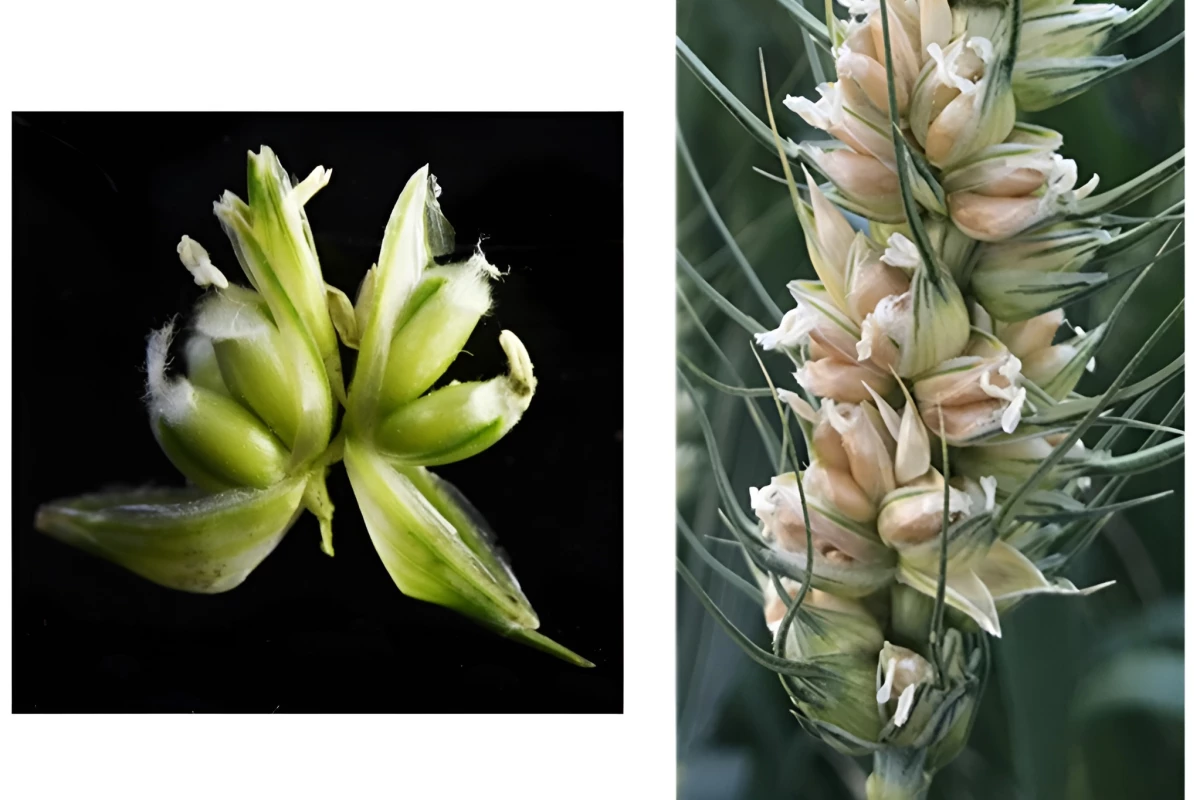Science
Genetic Breakthrough Could Triple Wheat Grain Yields

Researchers at the University of Maryland have made a significant advancement in agricultural science, potentially increasing wheat grain yields by up to three times. This breakthrough centers on a genetic discovery involving a mutant wheat plant known as MOV (multi-ovary), which can produce multiple grains from a single floret. The implications for food production could be substantial, given the pressing need for higher crop yields amidst growing global populations.
Wheat plants typically produce one grain per floret in their seed heads. However, the MOV mutation allows some florets to develop as many as three grains. Until now, the genetic basis for this phenomenon remained elusive. The researchers undertook a comprehensive mapping of the MOV wheat DNA, contrasting it with that of ordinary bread wheat. Their analysis revealed that a previously dormant gene, WUSCHEL-D1 (WUS-D1), becomes active in MOV wheat. This gene enhances the development of tissues essential for generating additional female flower parts, such as ovaries and pistils.
Implications for Future Wheat Production
Assoc. Prof. Vijay Tiwari, co-author of the study, expressed optimism about the findings. “Pinpointing the genetic basis of this trait offers a path for breeders to incorporate it into new wheat varieties, potentially increasing the number of grains per spike and overall yield,” he stated. The research, published in the Proceedings of the National Academy of Sciences, outlines how activating the WUS-D1 gene in cultivated wheat plants could lead to a significant boost in grain production.
This discovery comes at a critical time when food security is becoming increasingly vital. With the world’s population expected to reach nearly 10 billion by 2050, the demand for efficient food production methods has never been higher. The potential to triple grain yields using existing land, water, and fertilizer resources could have profound effects on global agriculture.
The researchers plan to harness gene editing techniques to further enhance this trait in wheat crops, aiming to improve food production capabilities sustainably. As the world faces challenges related to climate change and resource scarcity, innovations like this one may play a crucial role in securing food supplies for future generations.
In conclusion, the genetic breakthrough in MOV wheat presents an exciting opportunity for increasing crop yields. As researchers continue to refine their techniques, the agricultural sector may soon see the fruits of this innovation in the form of higher-yielding wheat varieties.
-

 Science2 weeks ago
Science2 weeks agoIROS 2025 to Showcase Cutting-Edge Robotics Innovations in China
-

 Politics2 weeks ago
Politics2 weeks agoJudge Considers Dismissal of Chelsea Housing Case Citing AI Flaws
-

 World2 weeks ago
World2 weeks agoBravo Company Veterans Honored with Bronze Medals After 56 Years
-

 Top Stories2 weeks ago
Top Stories2 weeks agoIndonesia Suspends 27,000 Bank Accounts in Online Gambling Crackdown
-

 Lifestyle2 weeks ago
Lifestyle2 weeks agoStone Island’s Logo Worn by Extremists Sparks Brand Dilemma
-

 Sports2 weeks ago
Sports2 weeks agoMel Kiper Jr. Reveals Top 25 Prospects for 2026 NFL Draft
-

 Health2 weeks ago
Health2 weeks agoStartup Liberate Bio Secures $31 Million for Next-Gen Therapies
-

 Health2 weeks ago
Health2 weeks agoTop Hyaluronic Acid Serums for Radiant Skin in 2025
-

 World2 weeks ago
World2 weeks agoHoneywell Predicts Record Demand for Business Jets Over Next Decade
-

 Politics2 weeks ago
Politics2 weeks agoNew Jersey Voters Urged to Register Ahead of November Election
-

 Lifestyle2 weeks ago
Lifestyle2 weeks agoMary Morgan Jackson Crowned Little Miss National Peanut Festival 2025
-

 Sports2 weeks ago
Sports2 weeks agoYamamoto’s Mastery Leads Dodgers to 5-1 Victory in NLCS Game 2









